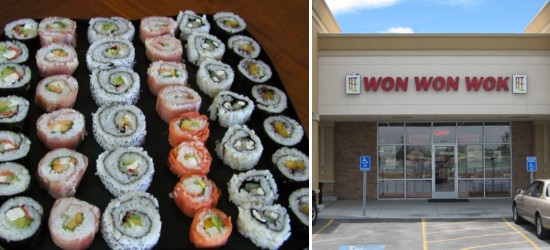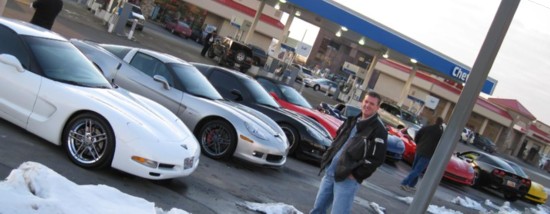I thought it might be interesting to talk about a business puzzle I’m facing. I’m going to map out a bit of my business theory (and I have no illusion that what I’m going to write will be unique, per se) and apply it to a situation I’m dealing with at work. To be very specific we’ve started adding some watches to our store and I’m trying to decide if it’s a good idea, a bad idea or neither. Hang on while I launch into some background business blabbering (this will probably end up boring everyone).
What follows is not a mathematical formula, merely an relationship. Desire fulfillment (DF)= revenue acquisition (RA). If you can fulfill a/the desire of an individual by selling him/her a product/service then you can acquire revenue from that transaction. Example: Company “A” sells food. Individual “B” desires food so they purchase it from Company “A.” Very simple. Things to keep in mind: 1) Desire fulfillment could be considered “utility” for those who are more familiar with that term. 2) The differentiation between needs and wants is irrelevant to this particular thought process so it will not be discussed. 3) Granted, some desire fulfillment does not result in positive revenue, but we’re discussing transactions/resolutions which do.
So then, it’s a pretty easy jump to the idea that More (M)(DF) = More(M)(RA). Company “A” sell sells food and clothing. Individual “B” purchases food AND clothing from company “A.” Consumers, in general, have a budget (whether self imposed, or created by financial limitations). Shoppers are going to spend “X” amount of money. “X” amount may include funds for clothes, food, books, hobbies, recreation and so fourth. The more needs you (as a provider of goods/services) can fill the more of the consumer budget you can expropriate. This is a generalization, of course. To reiterate: the higher the frequency of DF you can successfully convert, then more RA potential you have.
Real World Application (RWA): My company sells Knives. I don’t carry just one line. We have knife brand “1” and “2” and “3” and so on. If I only carried brand “1” people would only be able to purchase brand “1.” This is not in my best interest. We stock as many products as our Niche (more on this in a second) allows. Subsequently people often simultaneously purchase selections from numerous brands, thus increasing our revenue. Our current “M” factor isn’t too bad. A big “whoohoo!” to us for our ability to fulfill multiple consumer desires (sarcasm is lost in text so I will state its application). However, we have what I call “Niche Syndrome” (NicSyn- like the president… good thing, bad thing) which will be discussed later.
An important tangent: One thing a company must have in order to be successful (and I use this term loosely) is a perceived advantage (ADV). It’s as simple as that- there must be something that your company appears to do better than another company or people will not purchase products/services from you. The perceived advantage can be almost anything: lowest price, best looking pictures, largest selection, most intriguing product descriptions. It doesn’t matter- it just has to be an advantage. There are two polar types of retail/service outlets. The “megastore” and the “niche store”. Both of these business models serve as a type of advantage.
Walmart is the classic megastore. Their DF level is through the roof. A consumer can get nearly anything from a Walmart store. Their RA is phenomenal. And their ADV is size, selection and price. It’s a hard combo to beat. The good news is that there’s no reason to fight it. The niche store exists solely because consumers DF requirements are not limited solely to one ADV. Other advantages incorporated by niche establishments can create plenty of DF. Niche stores offer things like “specialization,” “customer service” and “trust” to offset their limited (in comparison to a megastore) inventory (a DF component). A store’s RA can be impacted significantly by their ADV. So ADV(NF) = ADV(RA) is also true.
Megastores have a huge advantage over niche stores in one area in particular. That area is diversification (DIV). The NicSyn mentioned before stems from the limited inventory potential of the Niche Store. If you sell kitchen items, you probably shouldn’t sell engine oil. In theory the same person who might need a set of kitchen knives does drive a car and may need the oil you sell, but this kind of retail mismatch tends to make people uncomfortable. NicSyn does not allow for extreme diversification and so the product potential is somewhat limited. The question becomes how much diversification can a niche store have before it impacts sales? How will the sales be impacted (positive, negative, no change)? Not discussed here is the Meganiche store and the myriad of other hybrids that exist- once more, not relevant in this instance. We’re now heading back from the tangent to deal to deal with my RWA.
We sell a diverse selection of knives on BladeHQ. But we are, ultimately, a niche store. Our DF level is probably very high in regard to people who have budgeted for that we sell. We have some significant advantages (bear with me folks- what follows is not supposed to be a gloat fest, I’m merely trying to illustrate one of my earlier points): A comprehensive selection, a visually appealing website, nice pictures, fair prices and good customer service. So for us the result so far has been that M[ADV(DF)] = M[ADV(RA)] .
The questions are: Will (M)(DIV)[ADV(DF)] = More revenue for us, where DIV= Watches. Can we acquire more of a customer’s budget and raise our DF level by diversifying our selection? Do knives and watches go together well enough to help our RA rise or will it have a negative impact? Will people buy watches instead of knives (this would create a neutral effect)? Maybe that’s a lot of unnecessary discussion to arrive at such simple questions…
We’ve actually added some watches to the website already, but have not actively promoted them to date. I’m somewhat apprehensive about this new project. Eventually the plan is to create a whole new niche store that sell watches exclusively, but in the meantime I’m hoping for a positive result with this experiment. We’ve had some luck with out other website (BladePlay) branching out into self defense products. Somehow lower end knives and personal security seem to have a tighter relationship then high end knives and watches. Still, my hope is that people who buy high end knives also buy watches and we can fulfill some of their watch DF in addition to their knife DF. Fingers crossed.
Our plan is to try and make the watch section of BladeHQ unobstructive. It will, in effect, be it’s own watch store embedded within our knife store. We don’t want want to affect the knife shopping experience, we want to enhance it. Off we go, fingers crossed, time will tell.


